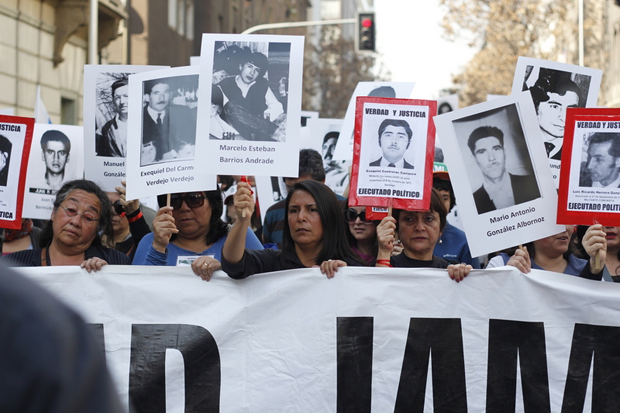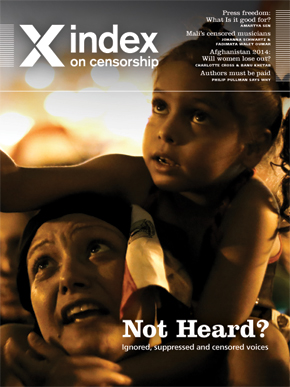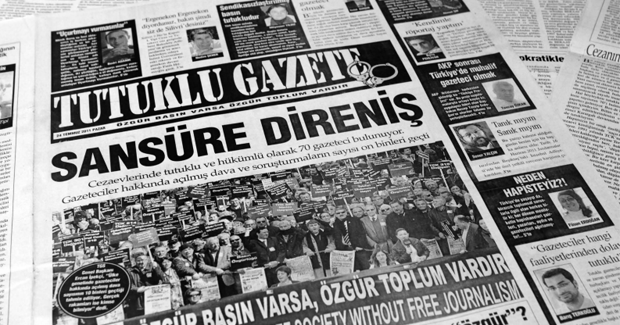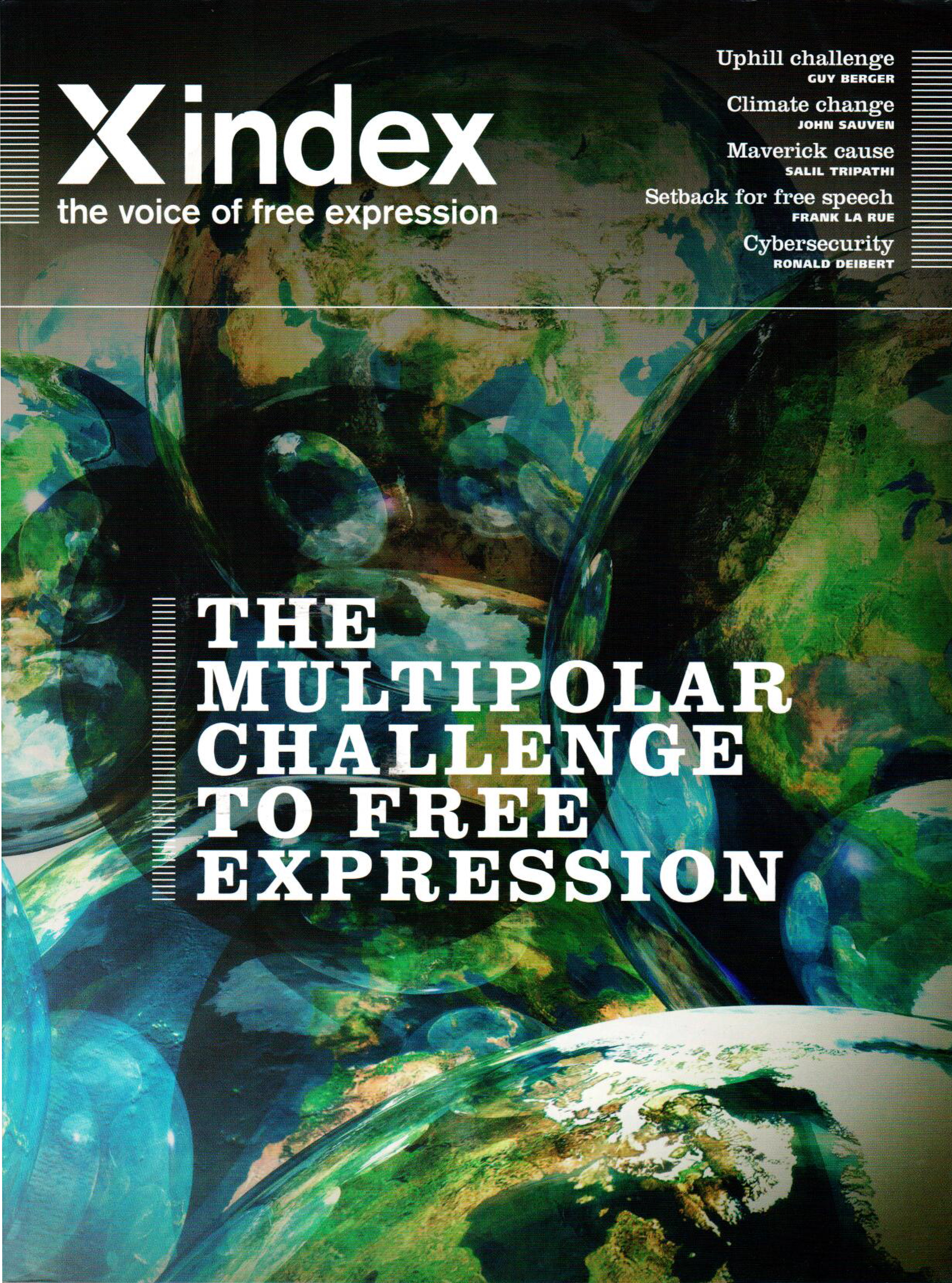An excerpt from Exorcising Terror: the Incredible Unending Trial of General Augusto Pinochet by Chilean expatriate writer Ariel Dorfman


An excerpt from Exorcising Terror: the Incredible Unending Trial of General Augusto Pinochet by Chilean expatriate writer Ariel Dorfman

The autumn issue of Index on Censorship magazine brings together articles from writers including Amartya Sen, Philip Pullman, Jonathan Dimbleby and Peter Kellner, and covers India, China, Brazil, South Africa, Honduras, Colombia, Afghanistan and...

As protests continue in Istanbul, journalist Yavuz Baydar calls for the media to resist government pressure to filter the news

From the Magazine: The media’s infatuation with a single narrative is drowning out the country’s diversity, giving way to sensationalist reporting and “paid for” news. But, says Bharat Bhushan, moves towards regulation could have a chilling effect too

From the Magazine: Writer and artist Htoo Lyin Myo gives his personal account of working under government censorship in Burma

Index, in partnership with the European Council on Foreign Relations, held a debate launching the latest issue of Index on Censorship magazine, with a special report on The Multipolar Challenges to Freedom of Expression

From the Magazine: Freedom of expression is a universal, fundamental human right. But who actually has access to free expression? Index CEO Kirsty Hughes looks at the evidence.

Our special report explores dramatic shifts in the landscape of freedom of expression in recent years.
We are now living in a multipolar world, where emerging powers command considerable influence and where economics, politics and cultural expression are being redefined. The protection of free speech in one country may amount to criminal insult in another. Whether it’s religious offence, public order or online freedom, India, Brazil, the United States and Russia have vastly different approaches. How they position themselves on the international stage – and how they resolve matters when countries clash – could have enormous impact for the future of free expression.
Includes articles by: Guy Berger; John Sauven; Salil Tripathi; Frank La Rue; Ronald Deibert and more.
Coming up in the next issue of Index on Censorship magazine, out today, is a special report on the shifting world power balance and the implications for freedom of expression.

Our special report explores dramatic shifts in the landscape of freedom of expression in recent years.
A quarterly journal set up in 1972, Index on Censorship magazine has published oppressed writers and refused to be silenced across hundreds of issues.
The brainchild of the poet Stephen Spender, and translator Michael Scammell, the magazine’s very first issue included a never-before-published poem, written while serving a sentence in a labour camp, by the Soviet dissident Aleksandr Solzhenitsyn, who went on to win a Nobel prize later that year.
The magazine continued to be a thorn in the side of Soviet censors, but its scope was far wider. From the beginning, Index declared its mission to stand up for free expression as a fundamental human right for people everywhere – it was particularly vocal in its coverage of the oppressive military regimes of southern Europe and Latin America but was also clear that freedom of expression was not only a problem in faraway dictatorships. The winter 1979 issue, for example, reported on a controversy in the United States in which the Public Broadcasting Service had heavily edited a documentary about racism in Britain and then gone to court attempting to prevent screenings of the original version. Learn more.